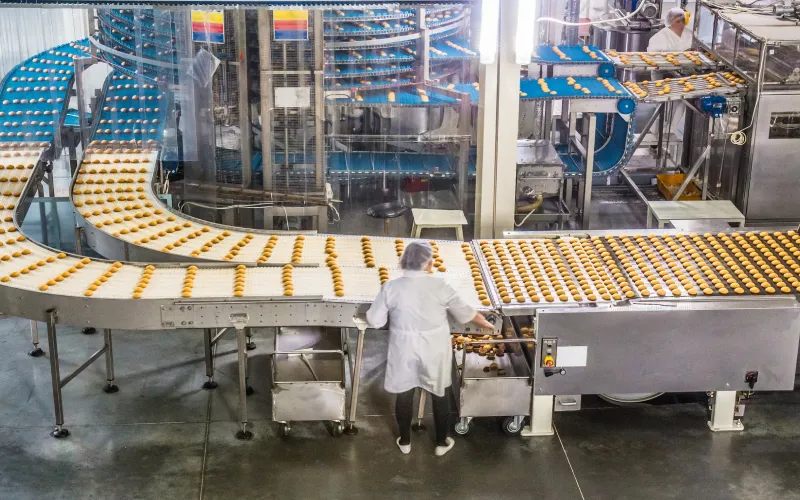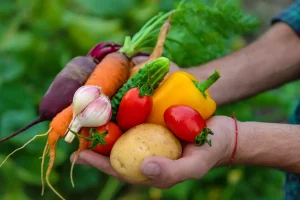The U.S. food industry has undergone significant changes due to shifts in consumer behavior and evolving economic trends. These changes have introduced various challenges, ranging from maintaining food production quality to navigating digital and social transformations.
In this situation, the food industry must adjust to a changing socioeconomic landscape. In fact, providing fresh, high-quality food is impossible when supply chains are not well adapted to current markets. An efficient supply chain is essential because it directly impacts productivity. If products are not stored well, forgotten in stock, or face transportation issues, it results in both increased costs and wasted resources (Felix et al., 2020; Seidor, 2023).
Fortunately, all of this can be improved through supply chain optimization. When businesses learn to optimize their supply chains, they can mitigate potential risks while also boosting production. In this article, we will introduce you to this process and also provide expert strategies for implementing it in food manufacturing.
An Overview of Supply Chain Optimization
Supply chain optimization is a process by which operations of a supply chain are adjusted to maximize efficiency, reduce costs, and improve overall performance. This adjustment includes tasks such as reducing lead times, restructuring production schedules, improving transportation efficiency, and reviewing disruptions in the supply chain, including monitoring raw material availability and management.
When enterprises undertake supply chain optimization, they adjust to economic changes, increase productivity and improve customer satisfaction. Many companies are interested in this process as well for its environmental benefits and reputational advantages.
Strategies for Supply Chain Optimization in Food Production
Several tasks must be undertaken to optimize the food production supply chain. The following strategies can help achieve these goals:
1. Reduce Costs and Improve Delivery Speed
These tasks are of current priority, given the importance of low prices in a fast digital world. In this context, the integration of demand planning and inventory optimization is a particularly effective strategy.
Demand planning consists of aligning production with real-time market demand. It brings together three elements: prediction of future levels of demand, stock control, and supply chain management (ILG, 2024). Through these elements, cost efficiency is achieved. As a result, opportunities for cost reduction and improved delivery are found. It is critical to use technologies such as data analytics or forecasting models to apply this strategy.
Inventory optimization ensures that stock levels are at an optimal level. It is based on techniques such as ABC Analysis, Economic Order Quantity, and Safety Stock Management (Byce, 2025). Its benefits include reduced storage costs and shorter lead times, and an improved logistics communication and coordination, which increases productivity and produces faster response times to market demand.
2. Embrace Technology in the Food Production Supply Chain
Given the digital supply revolution, it is critical to integrate technology in supply chain design and management strategies. This revolution is characterized by a shift from linear supply chains to intelligent networks (Shelley, 2024). Cutting-edge technologies such as artificial intelligence, (AI)-driven analytics, blockchain, and Internet of Things (IoT), are being used in inventory management systems and logistics automation.
In the immediate future, the use of these tools will be widespread in food production supply chains. The strategy for using them competitively comes from the orientation of an informed-choice, goal-oriented plan. Leveraging data-driven insights can optimize operations, reduce costs, and enhance efficiency. However, if these operations are designed to pursue goals that competitors cannot achieve, they can become a key differentiator in the market. Innovation and continuous improvement through chain supply design is the key for sustainable competitive advantage in the food industry.
3. Improve Quality and Traceability in Food Production
Food production is intended to provide fresh and healthy products. An effective strategy to achieve these objectives involves quality improvement and the use of traceability systems. On the one hand, quality control measures must be implemented to prevent contamination and ensure compliance with regulations. On the other hand, traceability systems monitor raw materials from sourcing to distribution, allowing for the quick identification and resolution of safety concerns, recalls, or supply chain disruptions.
Actually, quality products are a must for consumers. Control measures and traceability allow for the identification of threats and risks and the development of appropriate solutions. When quality and traceability are improved, food production meet industry standards and customer satisfaction is increased.
Optimizing Food Production Supply Chains
Supply chain optimization is transforming how products are manufactured. This is especially true in food production, where automation, traceability control, inventory management, and supplier selection are key to having an efficient process and supplying U.S. markets. If you need more information, you can visit the Dream Foods website. Contact us if you have observations or further questions.
Bibliographic References
- Barrett, E. (2023, January 9). Council Post: Supply Chain Optimization: An Introduction. Forbes.
- Byce, S. (2025, February 28). Key Strategies for Retail Inventory Optimization. Toolio.
- Carr, T, et al. (2022, August 29). Delivering the manufacturing renaissance in the U.S. McKinsey & Company.
- Felix, I., et al. (2020, July 2). U.S. food supply chain: disruptions and implications of COVID-19. McKinsey & Company.
- ILG (2024, October 15). How Effective Demand Planning Can Reduce Business Costs | ILG. UK EN.
- Panigrahi, R.R., Singh, N. and Muduli, K. (2024), “Digital technologies and food supply chain: a scoping view from 2010 to 2024”, International Journal of Industrial Engineering and Operations Management.
- SEIDOR (2023, September 15). Challenges of the Agri-food Industry: Technological Solutions. SEIDOR.
- Shelley, S. (2024, June 24). Navigating the Digital Age: The role of Technology in Supply Chain management. University of the Cumberlands.






